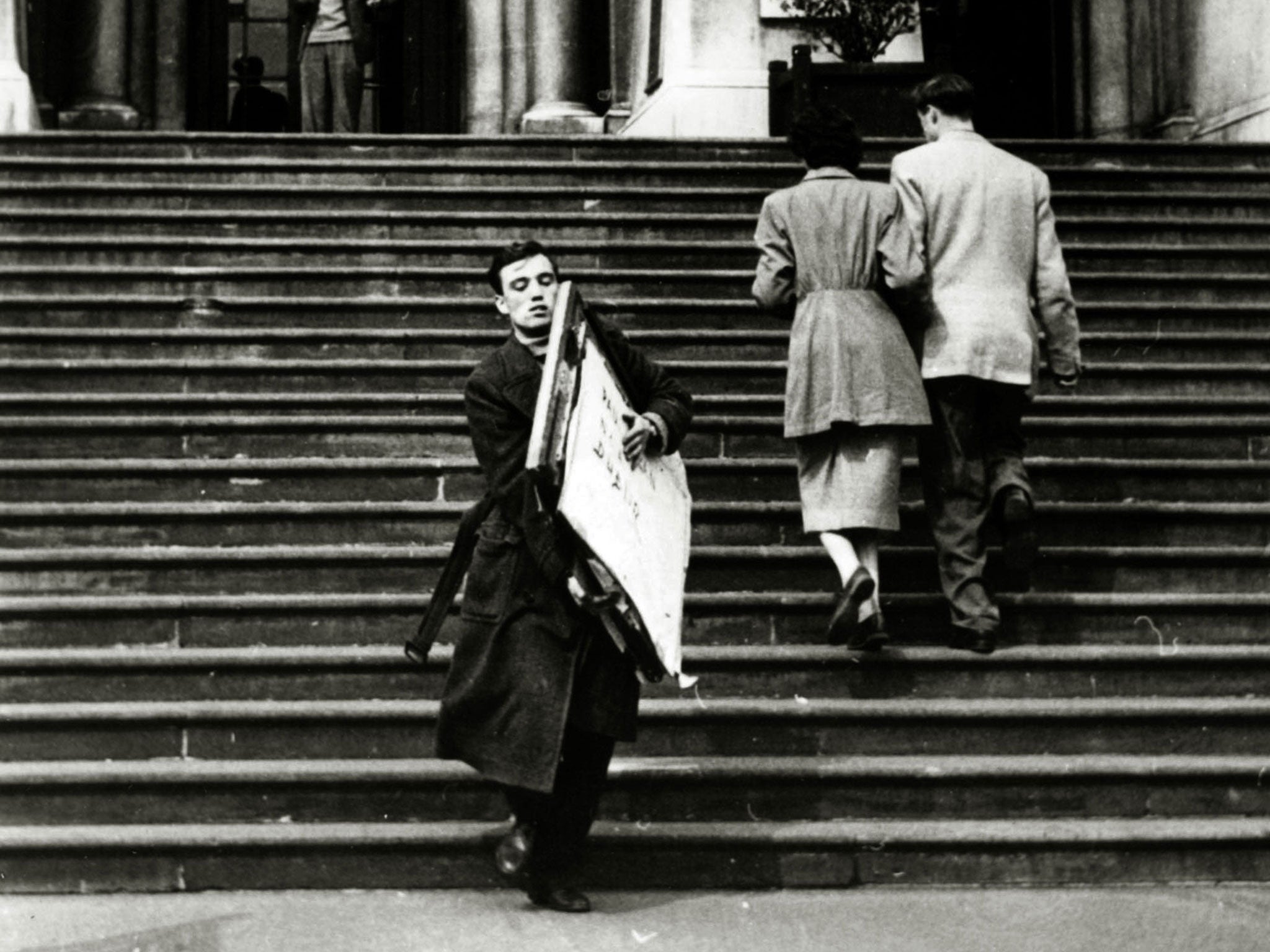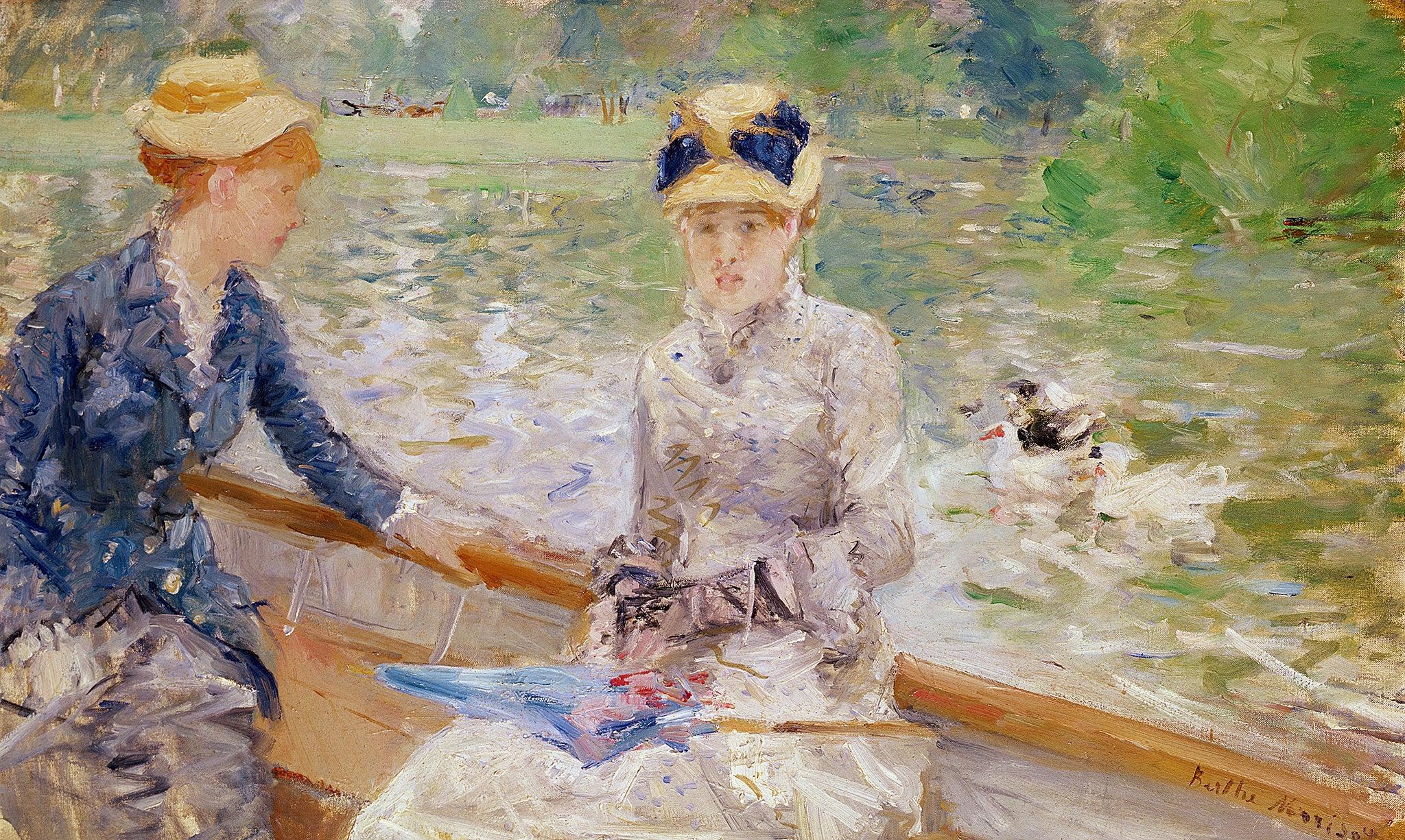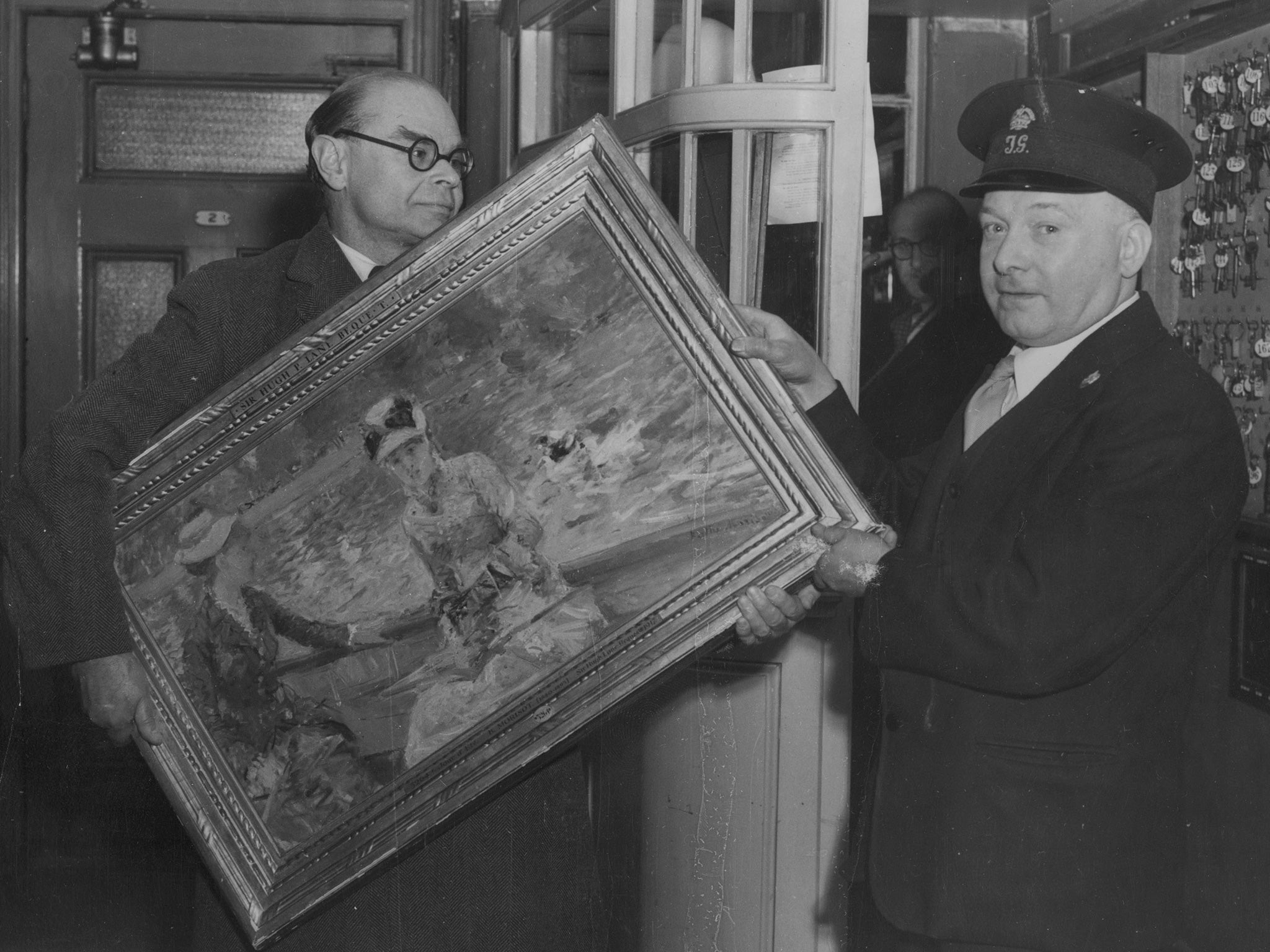'We didn't really think we'd get away with it': The astonishing story of how two young Irish men completed an audacious £7m art heist
In 1956 Paul Hogan shocked the world by unhooking an Impressionist masterpiece from a wall in the Tate and carrying it calmly out of the gallery

As Paul Hogan came dashing down the steps of London’s Tate Gallery in 1956 with a £7m Impressionist masterpiece under his arm after coolly unhooking it from its hanging place moments earlier, his picture was taken by a press photographer who happened to be waiting outside.
The resulting image shows the young Irish art student, the belt of his tweed overcoat flapping as he moves at speed, grappling with the heavy gilt frame containing Berthe Morisot’s Jour d’Eté and two large pieces of card attempting to cover the image of two French ladies on a boating lake. After jumping into a taxi, Mr Hogan realised he had no idea where to take his loot and instructed the driver to head to the only place he could think of - Piccadilly Circus.
As art heists go, it was audacious but it was hardly the crime of the century. Indeed, it was never meant to be.
Mr Hogan, then 25, and his accomplice, Bill Fogarty, a trainee vet from Galway, had staged the theft on 12 April 1956 solely to highlight Ireland’s claim to the Hugh Lane collection - some 39 paintings, including world class Impressionist works such as Jour d’Eté, which had been bequeathed by their wealthy owner to both London and Dublin before he perished on the Lusitania in 1915. A last-minute codicil to the art dealer’s will had promised the collection to the Irish Republic but because it was unwitnessed, a previous clause giving the paintings to the Tate was enforced by Britain - creating a further source of rancour between the two nations.

Such was the desire of the two young men to gain publicity for their brazen daylight snatch that they had tipped off the Irish News Agency on Fleet Street about a “demonstration” to take place that day outside the Tate. It was the agency’s photographer who took the shot of Mr Hogan, which was then promptly surrendered to police once it became clear what had happened and used to try to trace the suspects.
From the point of view of the “thieves”, who claimed the raid on behalf of the Irish National Students Council, the operation was a brilliant success. The story made headlines around the world and even served to knock the other great event of that day - Grace Kelly’s wedding to Prince Ranier of Monaco - from the front pages of some British newspapers.
But what has remained secret until now is the extent to which the antics of Mr Hogan, who was the son of a senior Irish civil servant and aide to Irish Taoiseach Eamon De Valera, and Mr Fogarty created panic at the highest levels of the British state.
The Scotland Yard file on the theft of Jour d’Eté had been ordered to remain under lock and key for 75 years until 2031 but it has now been released to The Independent under the Freedom of Information Act.
The 86-page file, which has been heavily redacted in places, reveals that although police were confident they had identified the two students, who went on the run after their escapade and eventually made it back to Dublin via Blackpool and Liverpool, the Yard and the Director of Public Prosecutions resolved not to prosecute the pair for fear of turning them into “martyrs” for the Irish cause.
The documents show that the authorities were doubly reluctant to put the men on trial because they felt the inevitable publicity would expose the shambolic security at the Tate, where national treasures had been hung unsecured and a warder had let Mr Hogan walk out of the building in the belief he was taking the Morisot (worth £10,000 in 1956 but now valued at £7m) to be photographed. Officers were concerned that news of the ease with which the painting had been taken would spark a spree of more hard-nosed raids at the gallery, the custodian of key works by British artists such as Constable and Turner.

Mr Hogan, now aged 84, told The Independent he and his colleague had been astonished to get away with their stunt: “We had decided our only way of getting away with it would be walk out of the front door. But we didn’t really think we’d get away with it. I’m not surprised if the authorities were reluctant to prosecute - if I had been the head of the Tate Gallery, the last thing I would have wanted was further publicity.”
After a four-day manhunt, which saw watches put in place at Heathrow and all ports to try to intercept the painting as well as an alert being issued to Interpol, the missing painting was returned to the Tate via the Irish embassy and an anonymous female friend of Mr Hogan.
In a memo to colleagues, the unnamed Metropolitan Police commander dealing with the theft outlined the reasons why he and the DPP had decided not to pursue charges.
The officer wrote: “This was not a larceny with intent to sell the picture to somebody else. Although it was not exactly of a political nature, it was made in a misguided sense of patriotism… If these men were charged they would then be heroes or martyrs.”
The officer then added grumpily: “One other point too I mentioned, that in such proceedings, the complete lack of security measures, so far as a National Picture Gallery was concerned, would be revealed and it might encourage others with a real felonious intent.”
The plot to highlight the injustice of Sir Hugh Lane’s bequest residing in London had been hatched just a few weeks earlier when Mr Hogan, then a student at the Dublin College of Art, came across a pamphlet written by the collector’s aunt, Lady Augusta Gregory, agitating for her nephew’s paintings to be restored to Ireland.
Lane, a Cork-born art collector, became determined during his lifetime to see Dublin host a world-class art collection and offered his paintings - including Renoir’s Les Parapluies and works by Manet, Pissarro and Vuillard - to Ireland on the basis that they be hosted in a purpose-built gallery in the capital.
When no gallery was forthcoming, Lane changed his will to leave the works to London. But shortly before his death when the Lusitania cruise liner was sunk by a German torpedo the collector renewed his bequest to Dublin. Because the document was never witnessed, Britain refused to recognise it as legally binding and removed the collection to the Tate as the Irish Republic was declared in 1922.
Mr Hogan and Mr Fogarty, who it later emerged was a member of the Official IRA, hatched their scheme while walking home together one evening and then travelled to London, staying at the Irish Club in Belgravia to allow them to reconnoitre the gallery - with the aid of a forged letter of introduction from the Dublin College of Art - and select the Morisot as their target.
Detectives investigating the theft likened the incident to the hijacking six years earlier of the Stone of Scone by four Scottish students who stole the relic from Westminster Abbey on Christmas Day 1950.
Another Yard memo states: “I suggest that we treat this in the same way as the matter of the Stone of Scone… The two students in this case apparently belong to that school of thought which prefers action to words. I am reliably informed that they cared little for the risk of discovery they ran when they took the picture. This rather tends to explain the audacious manner they adopted.”
The Yard file, released at the National Archives in Kew, west London, reveals the brazen nature of the theft.

Dennis Fisk, an 18-year-old insurance clerk, was visiting the Tate to look at Jour d’Eté and other paintings when he noticed the two men approach the Morisot carrying two large pieces of cardboard.
In his statement to police, Mr Fisk said: “Together they lifted the picture from its hooks on the wall on to the floor and placed it between the cardboard. The man carrying the picture when he had gone a few paces turned round and nodded to the second man… I thought that these men had the authority to remove this painting.”
The clerk then recounted how he had queried what he had just seen with a gallery attendant. He said: “I pointed to the blank space on the wall… and said to him, ‘Shouldn’t there be a painting there?’. He said, ‘It has been taken to the photographers and may be away a number of days’.”
The words were prophetic - the painting was indeed being photographed ahead of a short absence, though not in quite the manner the attendant had imagined.
As well as garnering publicity, the theft also arguably achieved the wider goal of its perpetrators. By 1959, it was announced that Britain and Ireland would share the paintings - a deal which was recently updated to ensure that 27 of the works remain permanently in Dublin with the remaining 12 rotated between the two capitals every six years.
And what became of the dashing patriotic art thieves? Mr Fogarty died in 2002 in a state of poverty while Mr Hogan, who became a senior Irish trade official, continues to live in his native Dublin.
Their exploits could yet hit the big screen. Mr Hogan’s nephew, the Irish actor Stephen Hogan, is in the process of writing a script with Oscar-nominated collaborators to seek funding for a film.
In the meantime, one of its protagonists remains proud of his youthful flirtation with notoriety.
Paul Hogan told The Independent: “We achieved what we set out to do. We were enormously successful in putting the issue in the headlines. I don’t think I was any more of a tearaway than anyone else I knew.”
Join our commenting forum
Join thought-provoking conversations, follow other Independent readers and see their replies
Comments